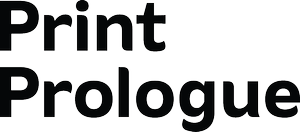PROOFS & PRESS CHECKS
Once a project goes to press, you will be able to review a hard (physical) or soft (digital) proof. You may also request to do a press check to review it while it’s running on press. You’ll check for different things at each of these phases. Make sure your client is informed that changes made by your printer during the proof or press phases cost money (a lot of money). Clients must be thorough in their review of all content before files are handed off to your printer. Additionally, a detailed design review before hand-off is a must.
We’ve included our basic checklists here, but it’s worth it to do some additional research online and advice-gathering from peers for a what’s expected of your review process.
CHECKLIST 1
Before hand-off
› Print and mock-up your piece at full size to review the design
› Make sure any guidelines or graphics that should not print are on separate layers (i.e. score lines, die lines, etc.)
› Do a spell check and double check for
extra spaces, correct punctuation, etc.
› Send the final design to your client for sign-off before sending to press. Note that this is their last chance to make changes before they start getting charged by the printer.
› Make sure no cropping or cutting off is occurring on linked images.
› Convert images to CMYK and make sure each pixel-based image is at least 300 dpi (offset) or 150 dpi (digital).
› If sending a PDF, convert all text to outlines. If sending a collected InDesign or Illustrator file include a high-resolution PDF labeled "go-by" for quick reference by your printer.
› Remove all unused color swatches in your file. If your job is a spot color job, no CMKY swatches should remain in your palette. If your job is a CMKY job, no spot colors (other than those used to designate finishings) should remain.
› Package files using the Package / Collect function in your design application. This quickly packages all fonts and images used in the document for accurate linking by your printer. It also notifies you of problematic images and color swatches.
CHECKLIST 2
Printer's Proof
› Double check for any possible typos—extra spaces, correct punctuation, missing characters, etc.
› Check the quality of linked images and vector graphics. Nothing should be "fuzzy".
› Check that all fonts are loaded and displaying correctly.
› Make sure no cropping or is occurring on linked images.
› If you're reviewing a color proof check for color accuracy.
› Check for any missing elements.
› Review the format. Are pages in the correct order, folds in the correct place, etc.
› Check if any captions, table of contents and page numbers are corresponding correctly
› Make sure the edges of photographs fully touch their outlined containers
› Make sure all bleeds extend to the edge and past the edge
CHECKLIST 3
Press Check
› Check is the paper. Make sure it is correct and matches final specifications.
› Check for color accuracy in images and solid colors. If you're printing a spot-color piece, compare your PMS swatch(s) to the printed sheet. Also, verify color consistency from page to page.
› If your piece is a 4-color process, review ink registration. Cyan, magenta, yellow and black should all hit in the same spot. This is most easily seen in the text. If anything looks a little "fuzzy" let your pressman know.
› Check large areas of solid color for even coverage. Make sure no unwanted marks or scratches are appearing.
› Bring your final proof and verify that all text is consistent with the approved proof and all changes that were made are current.
› Make sure dot gain is not occurring. This is when the ink may be too heavy in certain areas, therefore causing thin lines or small type to "close in" and appear to vanish.
› Be prepared to stay for the full review of a multi-page piece that may be more than one press run. Press checks can be as quick as 1 hour or as long as 8 hours collectively over the course of multiple days.
› The press check is not the time to check typos. Canceling a press run or updating a plate due to a typo may be possible but it is extremely expensive. Determine who will be paying for this before making the decision to fix something at this point.


